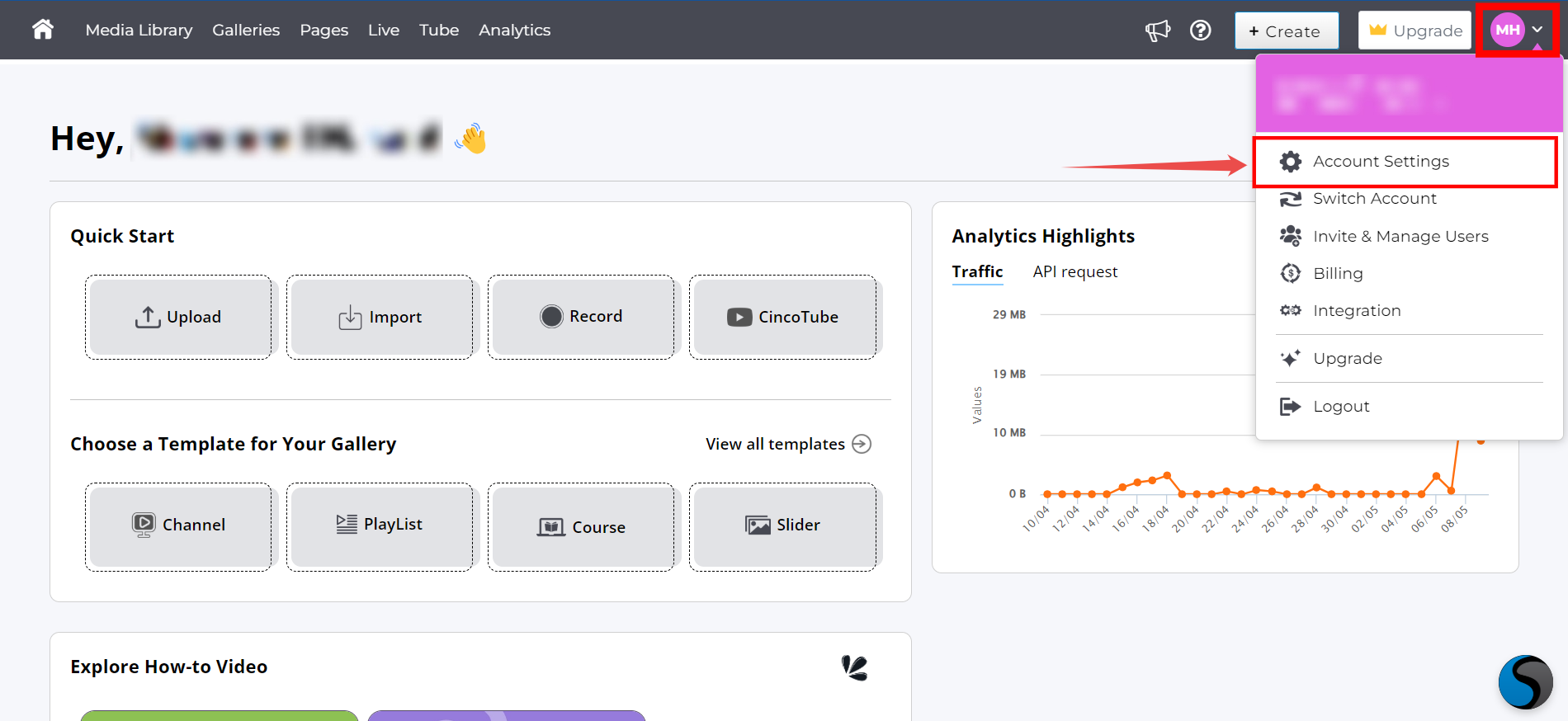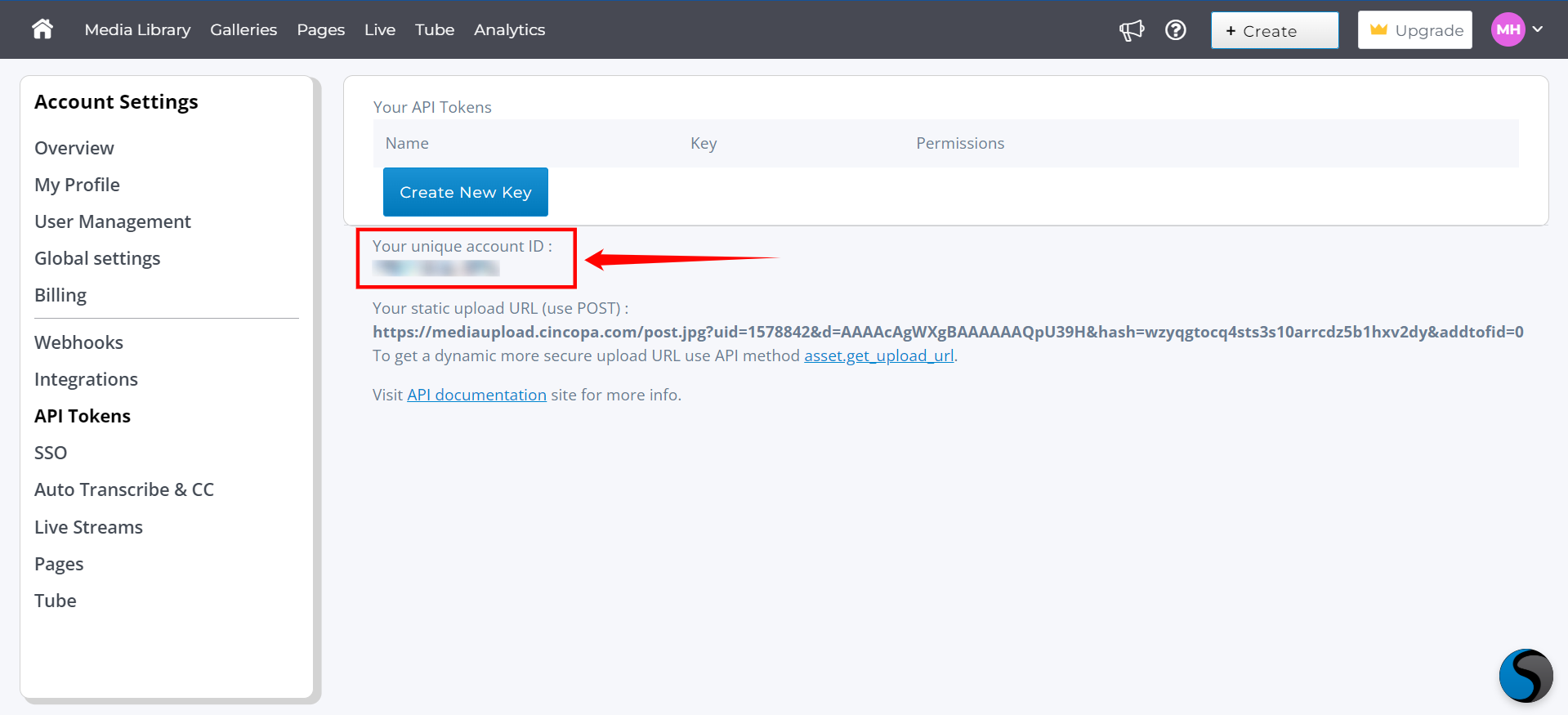Export Raw Analytics Data from Cincopa
You can export detailed raw analytics data from Cincopa using API calls. This guide explains how to use the API, locate your account ID, and download raw analytics in CSV format
Let's get started 🚀
Prerequisites
Your Cincopa Account UID (unique account ID)
A web browser or any tool that can open CSV files
Get Your Cincopa UID
To export analytics, you need your Cincopa unique account ID (UID). It's tied to your account and tells Cincopa which dataset to return.
Keep your UID secure and do not share it publicly, as it can provide access to your analytics data.
Step 1: Log in to your Cincopa account and navigate to your Account Settings.

Step 2: Navigate to your API Token section and click on it.

Step 3: Here you'll find "Your unique account ID" (e.g., A4AbePxwFKPJ).

Construct the Export URL
With your UID in hand, the next step is to build the export URL that will fetch your analytics data. This URL points to a hidden Cincopa endpoint that returns raw data in CSV format. Use the following URL format to generate your analytics CSV:
https://analytics.cincopa.com/ohm_get_v3.aspx?t=by_uid_csv&uid=YOUR_UID&p=PERIOD
Replace the placeholders:
YOUR_UID→ Your Cincopa account UID (e.g.,A4AbePxwFKPJ)PERIOD→ The time range in the formatdays-offsetExample:
6-0means the last 6 days including todayMax range:
31-0(maximum 31 days)
If you enter a range greater than 31 days, the API will not return data.
Download the CSV File
Once you've constructed the correct URL, follow these steps to export and open your analytics data:
Step 1: Copy the full URL you created (with your UID and period), paste it into your browser, and press "Enter".

If the link is valid and your UID is correct, the browser will automatically start downloading a .csv file. No login or additional credentials are required, as the UID in the link identifies your account. Once downloaded, you can open the file using Excel, Google Sheets, or any spreadsheet viewer.
Automating CSV Download and Parsing from Cincopa Analytics API
To automate the process of downloading and processing the CSV file from Cincopa's analytics API, a developer would:
Construct the URL: Build the correct URL that includes the necessary query parameters (like UID and period) to access the analytics data.
Send an HTTP GET request: Use an HTTP client to send a GET request to the constructed URL.
Download the CSV file: Capture the response, which will contain the CSV file content, and save it locally or process it in-memory.
Parse the CSV: Read the CSV file line by line, split the data by commas, and process each row as needed (e.g., storing the data in a database or performing calculations).
This can be done in most programming languages using HTTP libraries to handle the download and basic string manipulation or specialized libraries to parse CSV data.